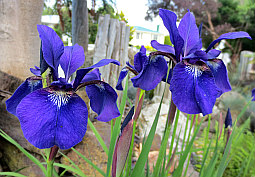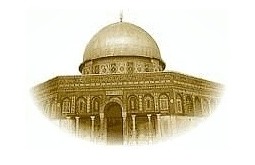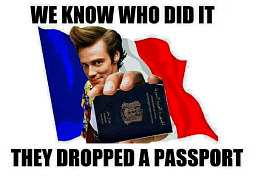Strange character
Sheikh Mohammed Din, 1877 – 1945
By Abdullah Drury
SHEIKH Mohammed Din was perhaps the earliest identifiable Punjabi Muslim settler in South Island.
Born in 1877 to Fazal Din, a farmer and merchant, he hailed from Sialkote, North-East of Punjab Province, now in Pakistan.
In 1904, W T Glasgow, the then Secretary & Inspector of Customs in Wellington, gave Mr Din permission to enter the Colony of New Zealand, provided that a Mr Devereux gave a written guarantee that he would leave within a month of his arrival…
Marriage & divorce
But Mr Din stayed on and within months became the store manager of Pannells Ltd on Lavoud Street in Akaroa. By the end of that same year, he was married to Gertrude Esther Hill at St Peters Anglican Church and for all intents and purposes, settled.
However, the couple were divorced by Decree Nisi in September 1909 and Mr Din remarried the following year to 19-year-old Madeline Elizabeth Olsen. According to online data, their first child Zohra was born in 1911 and their only son arrived in the next year.
Newspaper evidence suggests that there were two further daughters named Myra Gladys and Onyx or Onex Miriam. Mr Din’s death certificate in 1945 indicated that he was survived by one son and four daughters.
Mr Din appeared to have trouble with customers failing to pay their bills and there was a series of court cases involving recalcitrant debtors and his efforts to keep the business afloat. He was in the courts, pursing unpaid debts of clients and customers on credit failing to pay accounts owing.
On July 6, 1911, ‘Mohamid Din of Christchurch, Storekeeper’ filed for bankruptcy.
In the dock
In tracking down unpaid debts, one court case revealed a great deal about Mr Din’s personal religious sentiments.
“Sheikh Mohammed Din, on entering the witness box, had an oath administered to him in the usual way and kissed the Bible. The Magistrate (H W Bishop) asked him of what faith he was, and he replied, ‘Mohammedan.’ The Magistrate then expressed doubts as to whether an oath sworn on the Christian Bible would be regarded as binding by the witness. Mr Din assured the Magistrate that such an oath was binding on him. On being asked if the Holy Quran was not his Sacred Book, he replied that the Bible was very near the Quran.”
Following bankruptcy, Mr Din moved to Manchester Street in Christchurch. He was granted a court Discharge from this status over a decade later (September 6, 1922). Thereafter, the Wises Post Office Trade Directory listed him as a jeweller, whilst the Electoral Rolls recorded him as unemployed.
In late 1913, Mr Din, “a well-known figure in the Christchurch streets” was involved in what can only be politely described as a very public altercation between his wife and a police Constable named Smyth whilst under the influence of liquor. It was revealed at the police station that he had concealed a revolver!
By 1913, Mr Din was operating a jewellery business on Manchester Street in Christchurch. It seems that he would hawk his wares across the countryside. A month after he was discharged as Bankrupt in the Supreme Court of New Zealand, his second wife separated from him (October 1922). In 1940, they were formally divorced.
To Chathams
In November 1923, he first relocated to the Chatham Islands hawking merchandise and then opening a shop in the following year.
In the second chapter of ‘The People of the Chathams, True Tales of the islanders Early Days,’ Te Miria Kate Wills Johnson provides a fascinating glimpse of Mr Din’s personality in later years and some measure of religiosity not apparent in the Mainland newspaper accounts.
“One of the best known Chatham Island characters for 20 years was Sheik Mohamed Din. Known simply as Din, he had a price on his goods for everyone. The ones least able to pay for quality received shoddy goods for a very cheap price. A good price brought a quality garment.
“As a Moslem, he abhorred any food or article that came from a pig, and was a sitting duck for the many tricks played on him by the locals for his beliefs. Pero Dix once came into his shop [and] brought from under his coat a large meaty hambone, which he flourished in Din’s face. Din became very excitable, waving his arms and shouting and cursing at Pero for this sacrilege, which distracted his attention from the other three busily stuffing goods under their clothes in a shoplifting spree.”
On another occasion, another local convinced Mr Din that a riding saddle he stocked was made of pig leather and persuaded the storekeeper to sell it at a bargain price.”
Faith healing
“Din was well versed in a type of faith healing. In the early 1930s, Te Huia Hough suffered from agonising toothache. Sitting her on a chair, he drew a large square on the floor and divided that into several squares, in each of which he drew certain characters. He then began a strange dance, ending each set with a great leap and unearthly yell, when he would erase one of the characters with his foot. When all the characters were erased, and he had finished his dance and incantations, Te Huia’s toothache was gone.”
Disruptive quintet
In 1935, his ex-wife and son were involved in a widely reported court case for bank fraud and it was stated that he was living and working as a merchant in the Chatham Island.
Mrs Din also testified that Mr Din regularly sent her money.
“So Din became part of the Chathams community, being considered a shrewd businessman envied by other tradespeople. During the late 1930s, his wife and five children suddenly arrived, and life for Din and the islanders was never the same again. His wife Madeline Elizabeth was a Norwegian woman with a domineering disposition and his four daughters, Onyx, Myra, Bebe and Zora, and son Laurence, were a particularly disruptive quintet. They created dissention and conflict with the islanders and especially with near neighbours.”
According to the account, “On July 12, 1945, the body of storekeeper Sheikh Mohammed Din was found drowned in the Nairn River at Waitangi in the Chatham Islands.
“Laurence was suddenly anxious to show solicitude towards his father’s body and ordered a coffin suitable to send back to Mecca, as befitted a good Moslem.”
Ultimately, the coffin and corpse were transported to the Bromley Crematorium in Christchurch and cremated on July 24, 1945.
“It had always been Din’s dearest ambition to visit Mecca in his lifetime, so his last wish was to have his ashes taken there.”
Forbidden act
Islam forbids cremation. Indeed transporting bodies over distances is a big no-no. Instead, and for reasons that are entirely unclear (although presumably the word economy is involved), his ashes were interred at the Waikumete Cemetery in Auckland in 1948.
His death certificate lists his widow as a 52 year old Madeline Elizabeth Olsen, who, with her progeny, apparently returned to run Mr Din’s shop. But their “scandalous and violent behaviour led authorities to persuade them to leave the island.”
Laurence stayed to wind up business but the store mysteriously burnt down in 1947.
Mr Din has essentially been effaced from canonical accounts of Muslims in New Zealand, largely it seems because so few have ever heard of him (perhaps paradoxically in view of his frequent court cases covered in contemporary newspapers).
It is possible that he did not demonstrate enough interest in other Muslims resident in New Zealand at the time. Nor did he establish fame and reputation for his practice of the faith!
Strange character
Chatham Islanders believe that he prayed every day and followed the Halal dietary rules.
This is a shame, because, firstly he was an extremely interesting character in his own right. Secondly, he demonstrated the other end of the spectrum of Indian Muslim immigration — that of almost total assimilation into the dominant prevailing culture and mainstream society whilst preserving some elements of his own faith and identity.
Such a trait deserves more attention.





 But of course, you'd have to be a "conspiracy theorist" to harbor any doubts about the offi-
But of course, you'd have to be a "conspiracy theorist" to harbor any doubts about the offi-

November 2nd, 2017 at 9:46 pm
Im wondering if somwone could contact me as looking for more information about Sheikh Mohammed Din as i believw he os my great great grandfather thanks
January 22nd, 2018 at 12:17 pm
Abdullah knows more about Sheikh Mohammed Din than anyone. Contact Abdullah via https://www.facebook.com/abdullah.drury